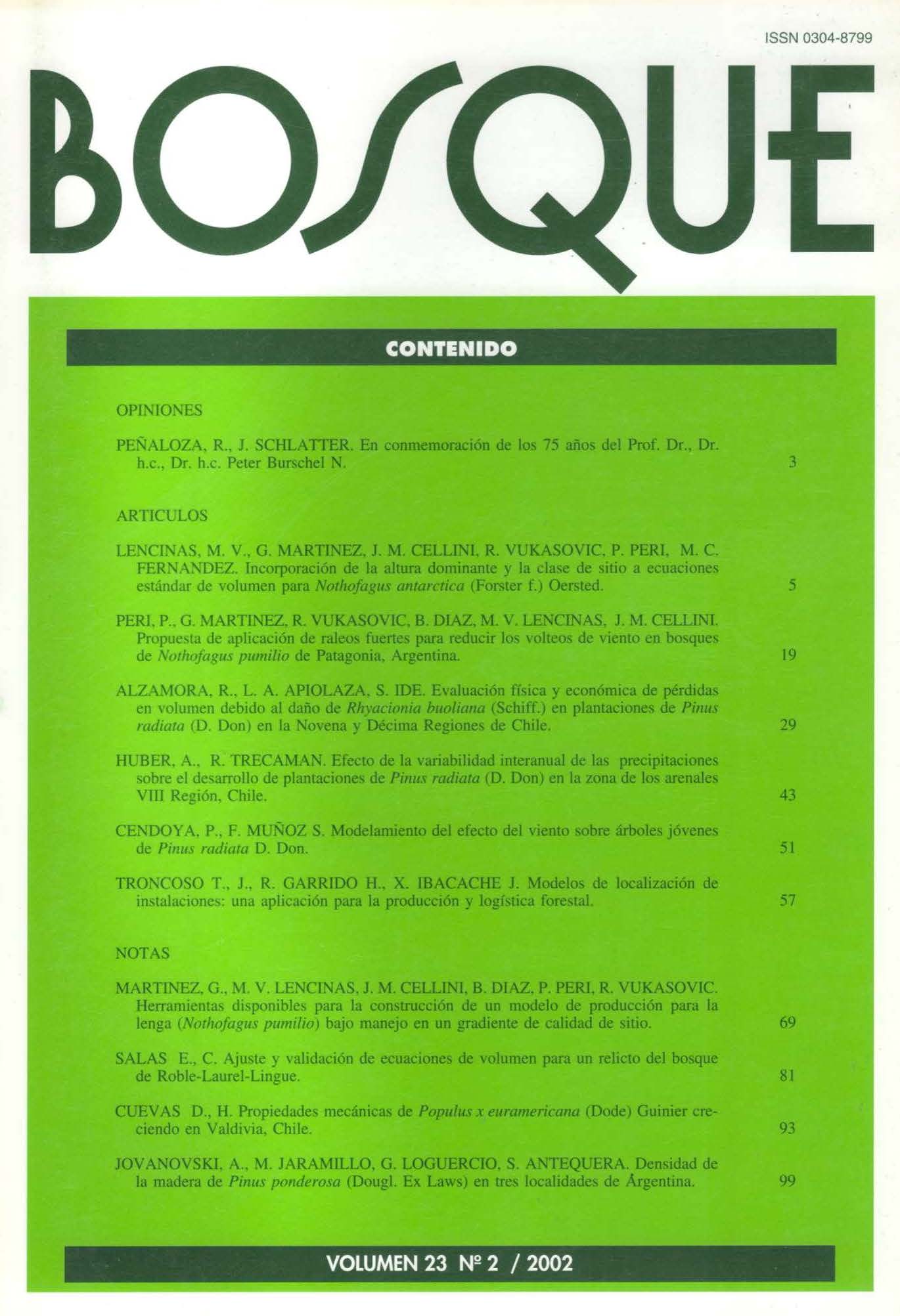Fitness and validation of volume equations for a relict forest of Roble-Laurel-Lingue
Main Article Content
Abstract
Using a non-destructive method based on the Bitterlich mirror relascope, we determined the total volume of individual trees in a relict native forest named Rucamanque, which is located in the IX region of Chile. Based on these estimations, equations relating volume were fitted. The seven species were grouped using a covariance analysis. After this analysis, four groups were chosen: 1. Laurel (Laurelia sempervirens), Lingue (Persea lingue), Tepa (Laureliopsis philipiana); 2. Ulmo (Eucryphia cordifolia) with DBH ≤ 60 cm, Olivillo (Aextoxicon punctatum); 3. Roble (Nothofagus obliqua), and 4. Ulmo with DBH > 60 cm, Tineo (Weinmannia trichosperma). To obtain the best volume equation for each species group, the following four steps were taken: fulfillment of statistical assumptions, models ranked according to goodness of fit, models ranked according to prediction capabilities and, finally, an analysis of the prediction capabilities of the models within diameter classes. The quadratic mean error (ECM) presented by the selected equations ranged from 15% to 24%, mainly influenced by the amplitude of fit range and the large natural variability of the volume in the larger diameter classes.

